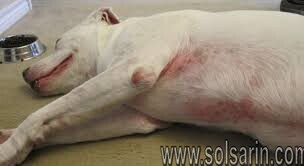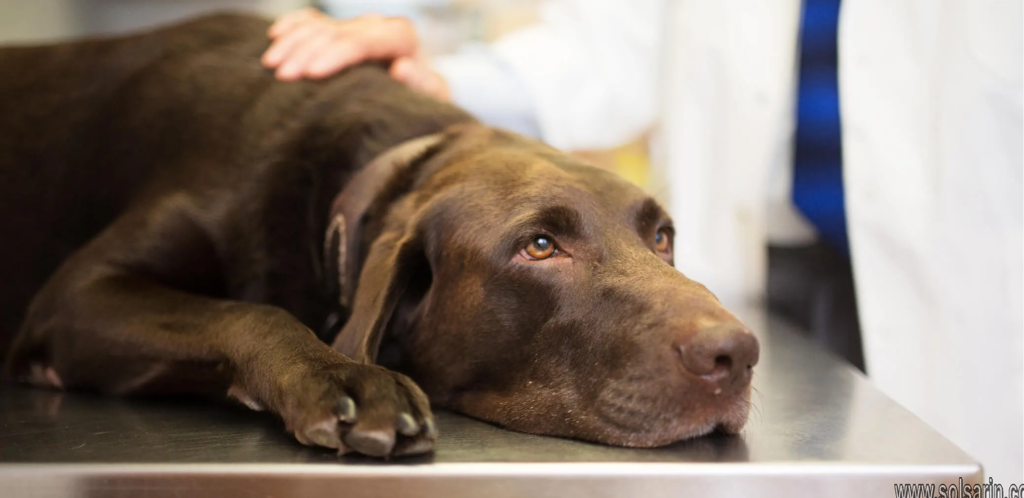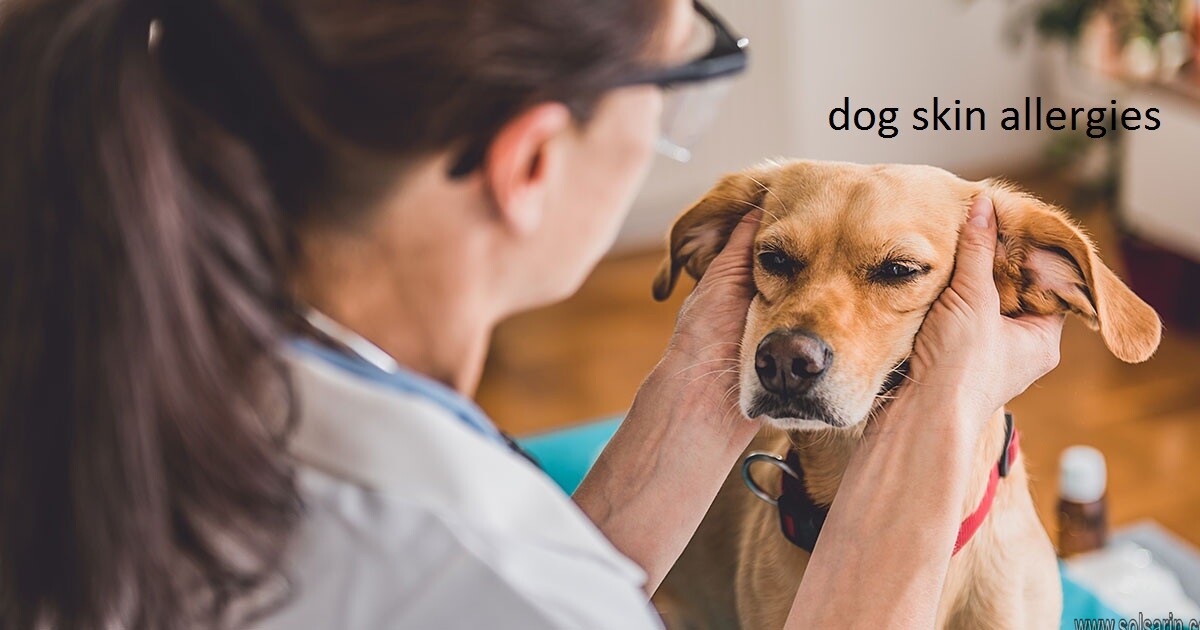dog skin allergies
Hello dear friends, thank you for choosing us. In this post on the solsarin site, we will talk about “dog skin allergies”.
Stay with us.
Thank you for your choice.
Like humans, dogs are susceptible to developing allergies such as atopic dermatitis.
If a dog has atopic dermatitis, the immune system reacts too strongly to common environmental allergens that are absorbed through the skin such as mold spores, dust mites, and grass. These irritants become absorbed more easily due to a dysfunction in the skin barrier, which decreases resistance to secondary infections.
Beacause of dog skin allergies, Dogs may also rub their face on the carpet; ear flaps may become red and hot. Because the wax-producing glands of the ear overproduce as a response to the allergy, they get bacterial and yeast (Malassezia ) infections of the ear.
In order to overcome these frustrating symptoms, your veterinarian’s approach needs to be thorough and systematic. Shortcuts usually will not produce results and only add to owner frustration and canine discomfort.


Inhalant and Contact Allergies
Substances that can cause an allergic reaction in dogs are much the same as those that cause reactions in people including the pollens of grasses, trees and weeds, dust mites, and molds.
A clue to diagnosing these allergies is to look at the timing of the reaction. Does it happen year round? This may be mold or dust. If the reaction is seasonal, pollens may be the culprit.
Food Allergies
Many people don’t suspect food allergies as the cause of their dog’s itching because their pet has been fed the same food all its life and has just recently started having symptoms.
However, animals can develop allergies to a substance over time, so this fact does not rule out food allergies. Another common misconception is that dogs are only sensitive to poor quality food.
If the dog is allergic to an ingredient, it doesn’t matter whether it is in premium food or the most inexpensive brand on the market. One advantage to premium foods is that some avoid common fillers that are often implicated in allergic reactions.
Flea Allergies
This type of reaction usually is not to the flea itself, but rather to proteins in its saliva. Interestingly enough, the dogs most prone to this problem are not dogs who are constantly flea ridden, but those who are exposed only occasionally!
A single bite can cause a reaction for five to seven days, so you don’t need a lot of fleas to have a miserable dog.


Staphylococcus Hypersensitivity
Bacterial hypersensitivity occurs when a dog’s immune system overreacts to the normal Staphylococcus (Staph) bacteria on its skin. It appears that bacterial hypersensitivity in the dog is more likely to occur if other conditions such as hypothyroidism, inhalant allergy, and/or flea allergy are concurrently present.
Bacterial hypersensitivity is diagnosed through bacterial culture and examination of a biopsy sample. Microscopically, there are certain unique changes in the blood vessels of the skin in bacterial hypersensitivity.
Diagnosis
Allergy testing is the best diagnostic tool and the best road to treatment for dogs that are suffering from moderate and severe allergies. There are several different testing methods available. The most common is a blood test that checks for antigen induced antibodies in the dog’s blood. Intradermal skin testing may also be performed.
In this method of testing, a small amount of antigen is injected into a shaved portion of the dog’s skin. This is done in a specific pattern and order so that if the dog shows a small raised reaction, the offending antigen can be identified. After a period of time (hours), the shaved area is examined to detect which antigens, if any, created a reaction.
Allergy testing is performed to develop a specific therapy for the allergic animal.
This year’s extreme weather created more rain, heat, and bugs than ever before. Our roses and wildflowers have put forth extra blooms, and the pollen count is up. Just as with owners, the pollen, dust, bug bites, and mold can prompt allergies in our pets.


While people with “hay fever” develop itchy eyes or scratchy throats and suffer sneeze attacks, allergic dogs more typically develop itchy skin, especially on their feet and ears. And any skin irritant, including bug bites, may lead to hot spots.
Here are some tips for how to treat dog skin allergies.
Flea Bite Allergy
Dogs with flea allergy typically suffer from rear-end itching. Today, pet parents can choose from a host of effective flea prevention products. Ask your veterinarian for a recommendation.
Since a single flea bite can turn an allergic pet into a scratching fiend, it’s important to treat the environment too.
Premise products like flea bombs may require pets to be removed from the house during treatment. For maintenance, vacuum frequently and empty containers immediately to remove flea eggs, cocoons, and larvae from the house.
For outdoor habitats, cut the grass short to allow sunlight to shoo away the bugs. Keeping your pets from problem areas and treating the bug habitats helps reduce the pest population. Nematodes—worms that eat immature fleas—are available from lawn and garden supply outlets.
Hot Spots
Hot spots, or moist pyotraumatic dermatitis, arise from a sore, itch, or bug bite. The inflamed moist area turns raw and extremely painful and can grow twenty-times larger in a single day. They affect the top layer of skin, ooze, and mat fur that hides the extent of the problem but can be treated at home.
Trim away the fur with electric clippers—a mustache trimmer works—and clean the area with a betadine-based product. Your dog may more easily accept a spray bottle to treat the tender area.
You can also use Burow’s solution ($19.85, amazon.com) available from most pharmacies, that dries the hot spot to speed up healing. Another effective home remedy uses tea bags, because the tannic acid also helps dry and soothe the sore.
After steeping the tea bag in hot water, allow it to cool, and apply the wet bag to the sore. After the first couple of days, the tenderness resolves.
With very large, slow to heal sores, or when the dog’s pain prevents you from treating, your veterinarian should address the problem. Preventing flea bites helps reduce the chance of additional hot spots.
Atopic (Inhaled) Allergy
Atopic dogs suffer from front-half itching. They chew, bite, lick and rub their face, chest, “armpit” area, and feet. The webbing between the dog’s toes can absorb allergens and make the entire body itch. Atopic dogs also commonly suffer from chronic ear infections.
Atopy is an inherited tendency. Small terriers, Golden Retrievers, Lhasa Apsos, Dalmatians, Setters, and Pugs may be more susceptible. Atopy diagnosis requires a veterinary exam.
Veterinarians may use various tests to identify which allergens cause your pet’s symptoms. Once your veterinarian identifies the allergens that cause reactions, immunotherapy may be an option.
A series of allergy shots help the pet’s body build immunity. Skin tests and allergy shots are relatively expensive but help about 75 percent of pets. The most common treatment involves prescription steroid-type medications or antihistamines to calm the itch.


Dog relief
Your dog may find relief in over-the-counter Omega-3 fatty acid supplements, which support skin health and can help calm the itch. Try Drs. Foster and Smith Premium Plus Omega-3 Gel Caps for Pets ($12.99, petco.com). You can find these supplements from your veterinarian or pet product stores.
Dogs may react to a single, or multiple allergens, but even when you know your dog reacts to house dust, it’s nearly impossible to eliminate exposure. Dog fur is a magnet that attracts and captures environmental allergens.
Simply washing your dog and rinsing the fur free of allergens offers immediate itch relief.
A cool soak in a kiddie wading pool soothes itchy skin. Add in an oatmeal shampoo once a week to keep the fur clear of debris.
In between times, use a spray bottle filled with a soothing oatmeal rinse, such as Aveeno’s Soothing Bath Treatment ($9.49, walgreens.com), and rinse off the paw pads after each outdoor trek to clear away allergens that toe webbing absorbs. If you know your dog suffers from allergies, take steps now to keep him comfortable.
That way, you both can enjoy the glorious outdoors when the weather cooperates.
When your dog is feeling under the weather, your vet should be the first person you call. Seemingly minor symptoms may be indicative of a serious underlying medical condition, in which case do-it-yourself remedies could be ineffective or cause more harm than good.
Random Posts
- smallest tiger subspecies
- when was the first motorcycle invented?
- bison vs buffalo
- bison vs buffalo vs yak
- where was nestle founded?
But if your dog has a minor ailment, such as dry skin or a mild upset stomach, some home remedies can be quite beneficial. Here are nine simple, vet-approved home remedies that can provide relief for your canine companion.
how to treat dog skin allergies at home
1. Vitamin E Oil for Healthy Skin
2. Electrolyte-Replacing Liquids for Diarrhea
3. Yogurt for Dogs
4. Chamomile Tea for Upset Stomach and Minor Irritation
5. Oatmeal for Itchy Skin
6. Epsom Salts for Wounds
7. Oils for Flea Prevention
8. Hydrogen Peroxide, Baking Soda, and Dishwashing Liquid for Deodorizing




